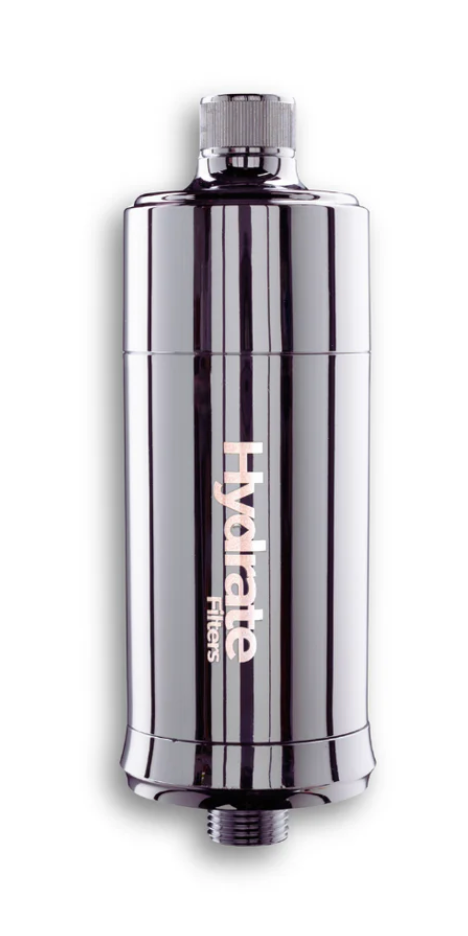Chlorine and Skin: what you need to know
- Maryana Lishman
- Feb 10, 2018
- 4 min read
Updated: Oct 24

A nice long shower.
Swimming lessons.
Soaking in the tub.
Splashing in the pool.
A big drink when you're thirsty.
In countries like New Zealand where we are fortunate to have unlimited access to safe water, have you ever considered that you or your child's skin could actually be adversely affected by such simple acts because it's actually very common.
That distinct smell that often comes with treated water is chlorine - a common disinfectant to remove harmful bacteria, viruses and pathogens however because it appears heavily in water supplies, it's important to be aware of its potential side effects and take appropriate precautions to minimise exposure, ESPECIALLY young children and those with eczema or allergies.
Understanding the impact of chlorine helps protect yourself and your loved ones. The harsh chemicals in chlorine can strip away the natural oils on our skin and hair, leaving them vulnerable and prone to damage or irritation which is not ideal for those with eczema, other types of dermatitis or food sensitivities.
Chlorine creates a bleaching agent when mixed with water that sits on top of the surface of our skin, making it easy to breathe into our lungs. When combined with organic compounds like sweat, urine, skin and certain shampoos or soaps, chlorine can even create harmful toxins known as HAAs. Some studies suggest inhalation of chlorine can even lead to increased irritability and mood disturbances plus exposure to chlorinated swimming pools in early life is also associated with higher risk of airway inflammation and IgE sensitization to dust mites, independent of other risk factors (see this study).
We can't always avoid chlorine completely but we can take steps to reduce our exposure, and support our bodies when we are exposed so lets dive right in with some practical steps.
SHOWER FILTERS 🚿
Chlorine not only disrupts the pH balance of your skin and hair causing dryness and irritation, it may also kill the good bacteria on your skin - plus as you shower, chlorine can enter your system through inhalation and absorption. Attaching a shower filter is a relatively simple and inexpensive way of minimising this risk — change the filter every six months or when you can smell chlorine again!
New Zealand:

Australia:
United States
BATHS 🛁
Here's a cheap way of degrading chlorine in your bath!
According to the San Francisco Public Utilities Commission, just 1,000 mg of vitamin C can neutralize the chlorine in a tub of bath water. I like Ascorbic acid (AA) or Sodium Ascorbate (SA) powders.
Run the bath water hot at first, adding quarter to half a teaspoon while it's running and then allowing the temperature to cool to allow the chlorine to dissipate via the steam. Enter the bath when the water is comfortably warm.
However if you prefer a bath tub filter, then Tubo is a popular choice!
HOUSE, BENCH TOP & UNDER SINK FILTERS 🚰
Whole House Filters are pricey but also an excellent investment in your family's wellness especially if you're not planning on moving any time soon, covering all water coming into the home, but if not an option, then Bench top filters are great as are under-sink filters.
The UFX3 Ultra Filtration Filter (NZ)

This under sink filter removes chlorine, heavy metals, PFAS and microplastics and is compact as well as easy to maintain.
If filters are just out of your budget, then prioritise spring water from the supermarket such as these 10L boxes for drinking, broths and general hydration.
SWIMMING POOLS 🏊🏻
BEFORE...
If you're sweaty or your skin isn't clean, have a quick shower first.
Use goggles to help protect eyes from chlorine irritation.
Apply a natural emollient such as shea butter or emu oil to form a barrier.
AFTER...
Shower straight away. Spray skin with the DIY Vitamin C spray below. Take more Vit C as above. Have an epsom salt bath at home (adding Vit C if needed) and follow up with chamomile tea.
VITAMIN C SPRAY RECIPE
½ cup filtered water
½ tsp Sodium Ascorbate (SA) powder
Add water and SA together in a glass spray bottle. Twist lid closed, and shake well to combine. Apply over entire body but do not spray on/near the face or on broken skin. {Note: Vitamin C degrades in water so this spray will only last 24 hours at a time}
GET OUTSIDE ☀️
After spending time in a chlorinated environment, make it a habit to head outside for some fresh air. Open up the windows at home, take a walk or simply relax in a well-ventilated space to allow your body the space to naturally detoxify.
Proper hydration is essential to flush toxins out of your system. Drink plenty of filtered water before, during and after swimming. Chlorine-free swimming options include natural bodies of water or those that use alternative disinfection methods such as salt, ozone and UV light.
Find this article helpful? You may also want to join our free Facebook group, The Healing Tribe and follow more of our content at Instagram. If you want comprehensive guidance and support especially if dealing with eczema, allergies or other gut health related challenges, work with me 1:1 .
This article is not meant to replace the advice of your primary healthcare practitioner or to provide medical advice. It is intended to share knowledge and provide additional information to help you make informed decisions about supporting your body after probiotics. It is recommended that you always consult with your doctor if you or your child is suffering from a medical condition.




Comments